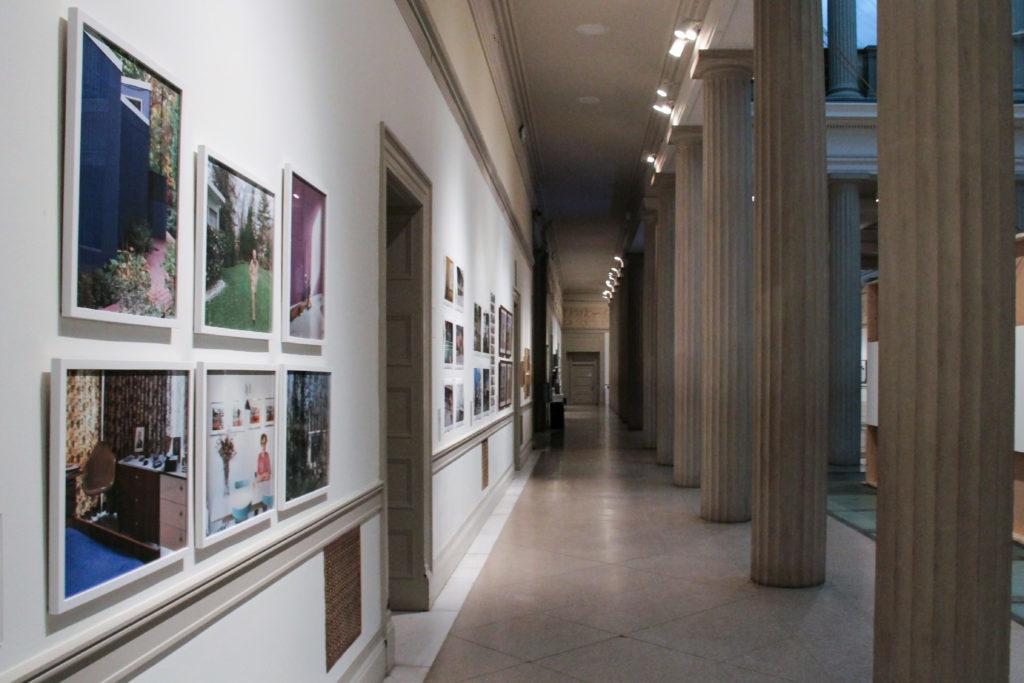A new graduate program in the Corcoran School of the Arts and Design will let students take art history courses in the shadow of the Smithsonian Castle this fall.
The master’s in decorative arts and design history program will include material and cultural art history classes taught at the S. Dillon Ripley Center, next to the Smithsonian Institution Building. Faculty said the courses will provide a hands-on education using the collections of artifacts in the Smithsonian’s museums to teach students about the history of design and prepare them to run museums and galleries.
The program previously existed in the then-independent Corcoran College of Art and Design from 2004 to 2012 before Smithsonian Associates, the institution’s educational wing, partnered with George Mason University on the program in 2012.
Smithsonian Associates approached GW’s museum studies department in fall 2015 to discuss the possibility of shifting the degree to the Corcoran School, which GW absorbed in 2014.
Sanjit Sethi, the director of the Corcoran, said George Mason faculty, most of whom have served as museum curators and professional historians, will continue to teach classes in the program once it moves to the Corcoran School. There are currently 13 professors who teach the courses.
“We’re preparing to welcome both full-time and part-time faculty into the GW community,” he said in an email.
Sethi said the program hopes to attract between 20 and 35 students who are currently enrolled in the Corcoran School’s art history and museum studies department and possible transfer students from the George Mason program, which currently has 28 students.
Sethi said the 42-credit course of study will improve the Corcoran’s reputation through its partnership with the Smithsonian, which runs a complex of museums and research centers in the D.C. area.
“Having the Master of Arts in Decorative Arts and Design History program return to the Corcoran complements our highly regarded master’s programs in Art History and Museum Studies and amplifies the Corcoran as a leader in supporting cultural institutions and scholarship as an aspect of cultural production,” he said.
Kym Rice, the assistant director of academic affairs for the Corcoran School, said design students will benefit from working interactively with artifacts in museum collections. Students will also get to work with faculty who have years of experience in curatorship and art history, she said.
“The Smithsonian has millions of objects in storage, so they will get a chance to work behind the scenes,” she said. “I think that is something that’s unique about being here at GW – having D.C., having all the museums, having all these things to be able to take advantage of. You can’t really do that anywhere else.”
Rice said the course of study will give students the chance to take courses on topics that aren’t available anywhere else, like the study of artifacts and decorative objects from the Victorian era. The program currently includes a federal furniture class, giving students access to furniture and curators that they wouldn’t normally get through the Corcoran, she said.
“They’re going to bring in a whole group of classes that are about decorative arts museum collections, and there’s not a lot for my students who are interested in that here,” Rice said about the Corcoran School’s current programs.
Rice said she expects this partnership will lead to a closer relationship between GW and the Smithsonian in the future.
“Our students in museum studies have done hundreds of internships there, over the course of a couple of years, so this is just another facet of this relationship that we already have at GW, which is pretty unique,” she said.
Brian Platt, the chair of George Mason’s art history department, said the program has been valuable to students because it is interactive.
“To have an academic institution partnered with the world’s foremost cultural heritage organization, it’s just a fantastic opportunity,” Platt said. “GW should be very excited to have such a program.”





